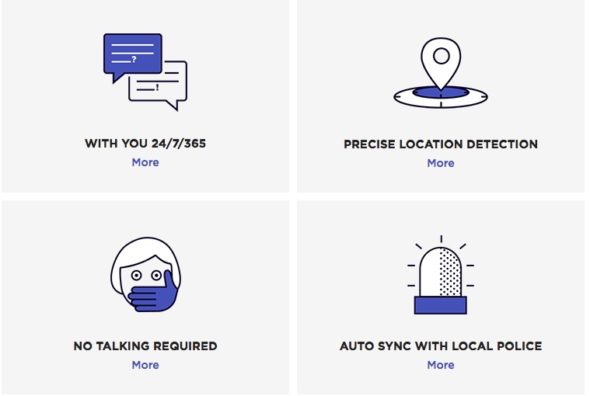SafeTrek is an app that helps you feel comfortable in scary or unsafe situations. When you feel unsafe, you hold down a button on your smartphone. If you release the button and do not input your password within 10 seconds, SafeTrek automatically sends police to your exact location. As a student, Zack, SafeTrek CEO, noticed that a lot of women on campus felt unsafe, but did not always want to run to the blue buttons that call security. So Zack and three friends built the smartphone app that has since attracted over 250,000 users across the United States.
 What makes SafeTrek unique is the built-in GPS function that sends your exact location to police—most police operators do not have the capacity to pinpoint callers. Furthermore, everyone always has their phones with them, which eliminates the need to look for a college blue-light system if you are on campus. Another benefit the app provides is useful data to security authorities indicating areas where people feel most unsafe and where increased security may be needed.
What makes SafeTrek unique is the built-in GPS function that sends your exact location to police—most police operators do not have the capacity to pinpoint callers. Furthermore, everyone always has their phones with them, which eliminates the need to look for a college blue-light system if you are on campus. Another benefit the app provides is useful data to security authorities indicating areas where people feel most unsafe and where increased security may be needed.
Our team has been able to meet with the SafeTrek executive team, learn more about what it takes to run a startup, and more importantly, the significance of maintaining a cutting-edge company that continues to beat market expectations. Safetrek has assigned us a project to create a marketing plan from strategy-to-implementation, and has been extremely hands-on with their approach. We met yesterday to collaborate and narrow our scope for implementation. Our team had a chance to brainstorm with SafeTrek’s team responsible for its success and we added value by offering a new perspective on creating that one channel that will make them continue to succeed with millennials.
Our goal working as a team, and with SafeTrek, is to go beyond a written report. More importantly, they are expecting a tangible implementation of our idea. We look forward to our upcoming meetings and brainstorming on more ways to increase downloads, usage, and build new platforms for the company.
CELect SafeTrek Team: Michelle Palka, Law; Daniel Tamasi, MBA; Daniel Vilardo, BSBA; Nathan Vogt, BS Engineering










